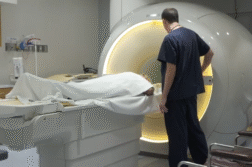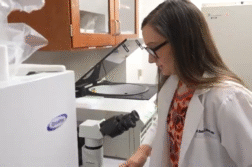TAMPA, Fla. (Ivanhoe Newswire) — More than 38 million Americans are living with diabetes. While many manage the condition with medication, for some, a pancreas transplant offers the only chance for a healthier life. Right now, over 800 people are on the national waiting list for this life-saving surgery, but only a fraction will receive one. However, a groundbreaking new method of preserving donor pancreases is offering hope to those waiting.
Life looks bright for Roman Evans now but a few years ago that wasn’t the case.
“The worst. It’s like, that’s it. My life, it’s done. But the only thing is like, I cannot move. I cannot walk,” he recalled.
Diagnosed with Type 1 diabetes, Roman’s kidneys and pancreas were failing.
“He was on a dying list basically,” said his wife, Olga Evans.
“He couldn’t walk no more. He needed a lot of help. I had to be right by his side,” recalled Roman’s son, Jonathan Evans.
Matthew Hunter Witt, MD, transplant surgeon at the TGH Transplant Institute, performed Roman’s kidney and pancreas transplant. But the way the donor pancreas arrived was a game changer.
“The pancreas itself is a bit of a finicky organ,” Dr. Witt told Ivanhoe.
Typically, a donor pancreas is transported in a cooler. But parts of the organ can get too cool … or too warm.
“It can cause damage that’s not seen on the outside, but at the cellular level,” Dr. Witt explained.
But his team at Tampa General Hospital was the first in the world to receive the donor pancreas in the pancreas pak.
“The pancreas pak is a much more sophisticated system and making sure that the fluid around the pancreas, the preservation solution that the pancreas graft is lying in, is between four and eight degrees Celsius. It has a built-in GPS unit,” said Dr. Witt.
Actively preserving and monitoring the donor pancreas for almost 10 hours on its journey. Roman’s no longer on insulin — essentially free from diabetes.
“I feel like miracle in my life. Thanks God. I feel so much energized. I feel like I’m back,” said Roman.
The pancreas pak technology could significantly improve the odds for those awaiting this life-saving surgery. Doctors say knowing exactly when the organ will arrive and having confidence it’s being kept at a consistent, optimal temperature eliminates some of the risks associated with traditional transport methods. This innovation also allows transplant centers to expand the distance from which they’ll accept donor pancreases — going from a radius of 250 miles to as much as 500 miles, which could ultimately mean more transplants performed.
Contributors to this news report include: Marsha Lewis, Producer; Matt Goldschmidt, Videographer; Roque Correa, Editor.
Source:
https://www.cdc.gov/diabetes/php/data-research/index.html
* For More Information, Contact: TGH Transplant Institute
(813) 844-5460
Free weekly e-mail on Prescription: Health from Ivanhoe. To sign up: http://www.ivanhoe.com/ftk



